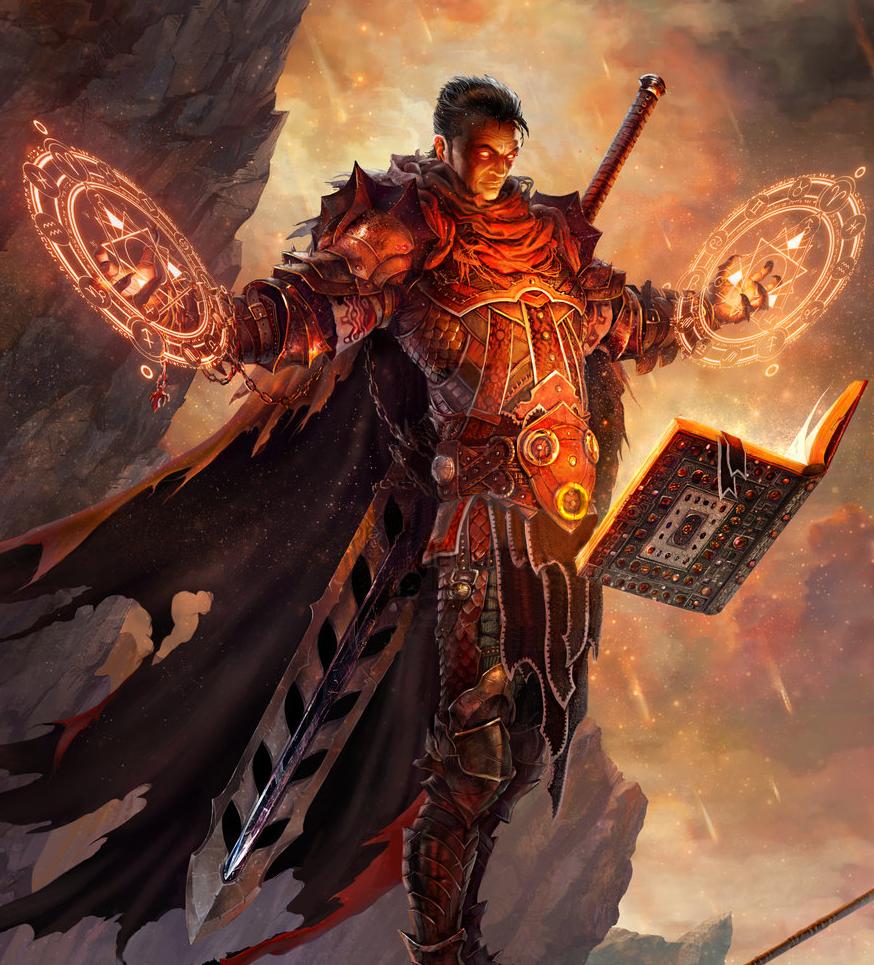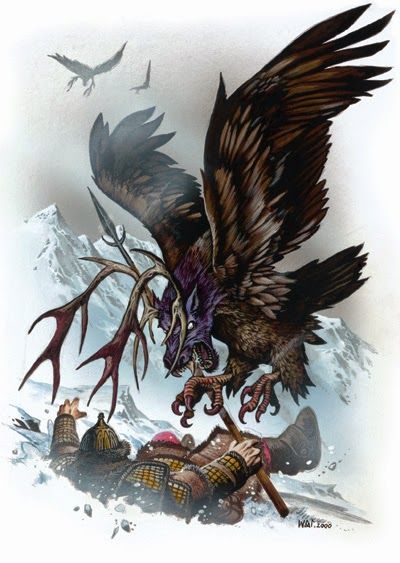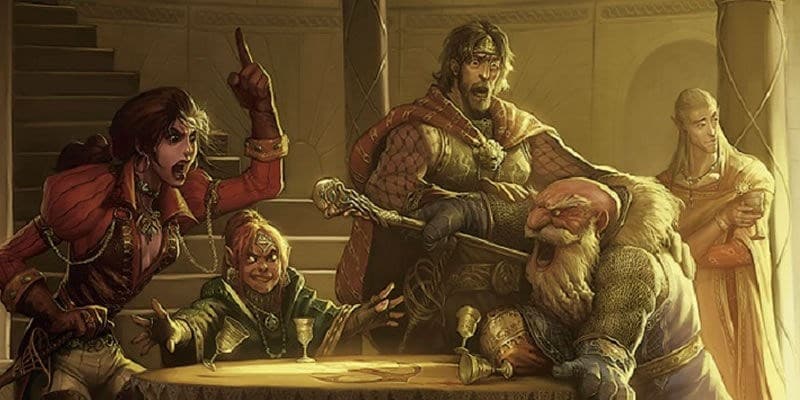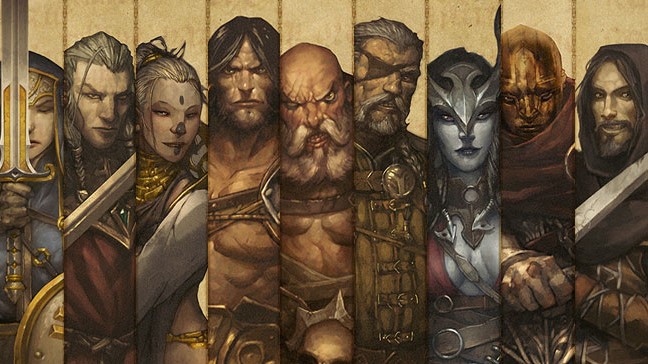Multiclassing, a strategy as old as Dungeon and Dragons itself. Multiclassing in Dungeons & Dragons is combining two classes together to form a roll that allows you to accomplish a unique ability but at the cost of limiting yourself on what a specified class was designed to do. The rules regarding multiclassing can be found in the only book I believe to be essential for DnD, The Player’s Handbook.
Two Reasons For Multiclassing In Dungeons & Dragons
Multiclassing runs off the idea that the lower level abilities of a class are better than the later skills you get. For instance, a wizard is not built for melee fighting. However, if you combine a few levels of fighter with a wizard, you get the ability to wear armor, improving your defense. Additionally, you are able to wield a weapon allowing you to not rely on spells. In these scenarios, you are trying to make a niche build that allows you to fulfill the roll of a wizard at say 7th level while being able to use the skills of a fighter at say 3rd level. However, as a result, you suffer from not being able to cast spells that you could at a 10th level wizard.

Gain Power
In my experience, there are two reasons why people multiclass: To specialize into a deadly combo, or for roleplaying purposes.
The classic example of a deadly combo is the warlock/paladin duo. A paladins damage comes from its’ “divine smite”. This is an ability that deals globs of damage by expending a spell slot of 5th level or lower. The shortcomings of that though is a paladin can only regain those after 8 hours of rest. However, this is where the warlock comes into play to supplement that disadvantage. A warlock regains spell slots every time they rest for an hour. This means a warlock who can cast at a 5th level spell slot and a paladin who has access to “divine smite” can then combine to do the max amount of damage a paladin can do every time he rests. In this sense, a player combined two effects of different classes to create something even more powerful.
Role-Play
With that talked about, the other alternative people choose to multiclass are for roleplaying reasons. For example, your paladin is blessed with the powers of the gods to defend your comrades. However, as time went on a dreadful demon came and eliminated everyone you tried to protect. Do you continue to rely on powers that were too weak to protect those you wish to keep safe? Or do you seek a pact with another being of power such as an angel or perhaps even a demon that rivals the one you seek to vanquish? Situations like this rise to make great multiclasses reasons as they give both substance to your character as well as allowing you to multiclass into a more unique role.

Downsides For Multiclassing In Dungeons & Dragons
So, even more interested in multiclassing now? Then be careful, multiclassing can get convoluted and even weaken your character’s ability to fight making your character progression a decision filled with turmoil.
A classic example is multiclassing into too many classes. While this may work occasionally, it is a difficult process requiring you to plan out your character all the way to the highest level of 20 and requiring you to gain certain levels in certain classes at specific times in each of these classes. As an example, you are multiclassing; you start off as a ranger at level 1, then a monk at level 2, then you decide to throw cleric on top of that for your level 3 spot. You are now a ranger that cannot cast spells to buff himself, a monk who can’t use any of his abilities, and a cleric who is unable to channel the divinity of his god. In return, you get the ability to hit with your fists slightly more, can go unarmored into combat, or cast 2 spells a day as a cleric.
In The Proper Order
Now let’s say you choose to do the same three classes but this time you do 5 levels of monk, 3 levels of ranger and 2 levels of cleric. You can now deal an additional 1d6 points of damage to your already 1d6 point damage hits via ranger spells, stun your opponents when you hit them, and cast spells that can do 3d10 points of damage then follow up for two more hits after that. You become a capable fighter that can dish out significant damage and stay competitive with everyone else while being able to do a larger array of abilities. However, this means rather than being online in say 5 levels you now need to be level 10 before you reach your desired skill.
Ability Scores Limit Multiclassing In Dungeons & Dragons
Another challenge toward multiclassing is having the stats to be able to do the multiclass options. For instance, certain classes require certain abilities to be higher to be able to go into them. Think of it much in the same way as a job now a day. You wouldn’t see a business hiring someone to dig trenches for them if they look like they are barely able to stand. It functions the same way. So let’s go back with the ranger, cleric, monk multiclass. A ranger needs both a dexterity of 13 and a wisdom of 13. Meanwhile, a monk also needs both a dexterity of 13 and wisdom of 13 as well. In this sense, it is not MAD (Multi-attribute dependent) as they both need the same stats to improve each other.

Two classes, Nothing In Common
Now we will say, you wanted to multiclass into both a ranger and paladin. Well, a paladin needs both a 13 strength and a 13 charisma to be able to multiclass into it. Therefore, your Strength, Charisma, Wisdom, and Dexterity must all be 13 or higher to be able to do this. This is considered heavily MAD as four of your six stats must be above average. Plus too better each of those classes you must increase all those stats to a higher number. This can only be done by going 4 levels into one class and boosting one selected stat by 2. In this sense, it makes it very hard to be fully competitive with everyone else around you. That said, maybe your character chose to do this because it fits your role-play. In this case, multi-class freely just prepare to try and overcome the challenges this may cause.
Guidelines For Multiclassing In Dungeons And Dragons
Now that you have a general idea of the challenges and reasons for multiclassing, how about we talk about a general guideline that can be helpful when deciding on what to multiclass into. Now before I continue, this is no way the law and is merely a suggestion to follow to help make sure you don’t feel like your character is lackluster in comparison to others. A good rule of thumb is do not multiclass into more than two classes, this shortens the time it takes for your character to become competitive and allows for an easier time in making decisions. After all, choosing between two or three phenomenal skills is better than choosing between ten decent skills.
Limit MAD
The next rule of thumb is to choose a multiclass that doesn’t make you very MAD. Often this means that you have two stats that you focus on improving not to severely limit another class. A great example of this is the sorcerer wizard combo that allows you to cast two spells in one turn instead of the usual limit of one spell per turn. This only forces you to focus on two abilities charisma for your sorcerer, and intelligence for your wizard. This makes you able to do both really well and allows you to maximize both without limiting either one.

Synergy
The last rule of thumb is to make sure the abilities synergies well or don’t overlap too much. For example, a paladin monk combo does not synergies well because a monk requires wearing no armor to use its’ abilities and is unable to use a weapon like a sword to activates its effects. Meanwhile, a paladin’s ability to tank comes from his ability to wear armor that increases his defense and his offensive capabilities come from wielding weapons like a sword to channel his ability to do the skill “divine smite”.
So, as you can see while a multiclass is great for both story and enhancing your character, it also comes with pitfalls and traps that can seriously hinder your play experience and should be considered very carefully before making the decision to do it. On a final note, a good in-depth guide for multiclassing can be found here. Then again, if you like mine so much, then check out more of my stuff here. Thank you all for your time reading this and hey, keep on rolling.

